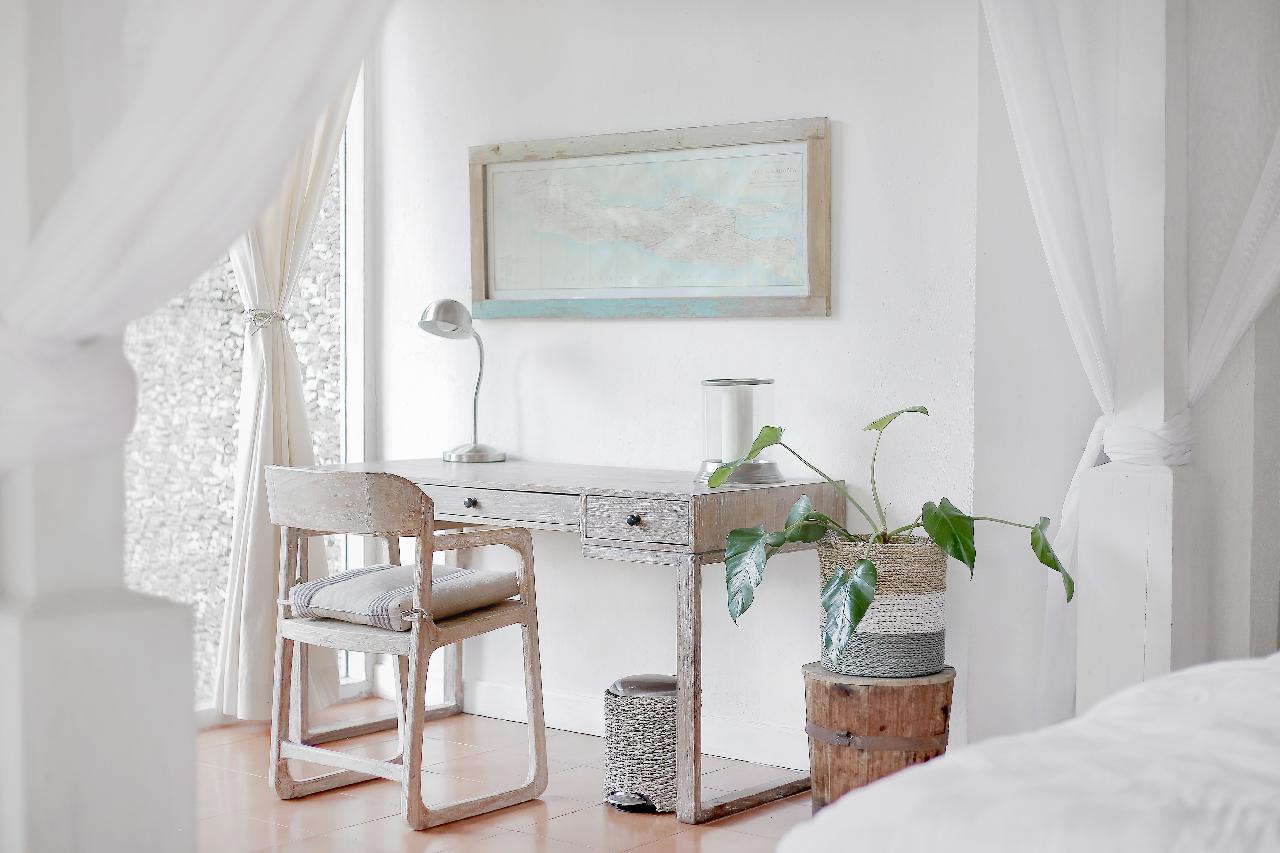The Muji theme is based on minimalism. Muji-themed rooms are minimalistic in both design and quality. So, what’s the best from the user’s point of view? The goal is to achieve a clean look that streamlines designs. Here are a few essential things about Muji-themed rooms.
-
How to Start
Before decluttering and reorganizing your room, you must have a clear idea of what you wish to achieve. Even though it is mostly about minimalism, that isn’t all that matters. Other essential features to keep in mind include:
- Décor pieces that are easy to arrange (may be linear or uniform)
- Neat and clean designs
- Focus on a Zen lifestyle. Consider using greenery with bright and airy spaces
- Natural materials
- Neutral colors
- High quality, adaptable, and practical furniture
-
Wall Colors
In a Muji-themed room, the walls have neutral-colored paint. Since the main focus is on minimalism, your colors shouldn’t be too shocking. Neons, bright pinks, and yellows are a big no. Instead, go for olive green, white, gray, or cream wall paint. These colors will go well with most minimalist materials.
-
Appropriate Materials
For the complete Muji effect, all your furniture and material must be natural. Everything needs to reflect the minimalist vibe. From wooden flooring to steel storage, your options are endless. However, they also need to focus on functionality and practicality. The Muji philosophy is against the use of impractical material. Even the most eye-catching décor pieces are discouraged if they aren’t functional.
When you are looking for a feel of rustic sophistication, wide plank flooring is a good option. Designer glassware by Kinto evokes a sense of effortless luxury, and antique barn board siding promotes a modern yet rustic feel. Every type of natural material has a significant role to play.
-
Less Is More
Muji rooms have a signature look that emphasizes on the principle less is more. It is, therefore, impossible to achieve your desired effect with a cluttered space. A good Muji room promotes coziness and meditative ambiance. However, you need to find a balance. Even when focusing on simplicity, your room shouldn’t look empty or lifeless. Focus on flexibility and adaptability to your lifestyle as well. The Muji-theme is about minimalism without being boring.
-
Go Local
Another reflection of the Muji principle is in where you find the items in your home. When decorating your room, try to use locally available material. Find items that are regularly used in your daily life and incorporate them into your style. Work with local brands when looking for textiles, art, or furniture.
-
Emphasis On Natural Light
Muji-themed rooms are big on natural light. They are all about simplicity and practicality. Nothing promotes these factors like installing big windows. Letting in a lot of natural light can make your home look bigger and airy. Even though installing the windows can be a costly hassle, it is worth the trouble. Limit your use of artificial light as much as you can.
-
Storage
Get as much storage as possible to keep the clutter away. Seamless storage is an important aspect of the Muji design. Where possible, get functional furniture that also doubles up as storage. It promotes minimalism and simplicity. For example, you can get platform beds with neat storage areas. They are economical and practical.
In conclusion, Muji design is popular for a good reason. If you are interested in simplicity, focus on functionality, and subtlety, it may be for you. The concept is straightforward, and its basis is on the concept less is more. It strikes a balance between minimalism and sustainability.
Discover more from Futurist Architecture
Subscribe to get the latest posts sent to your email.



